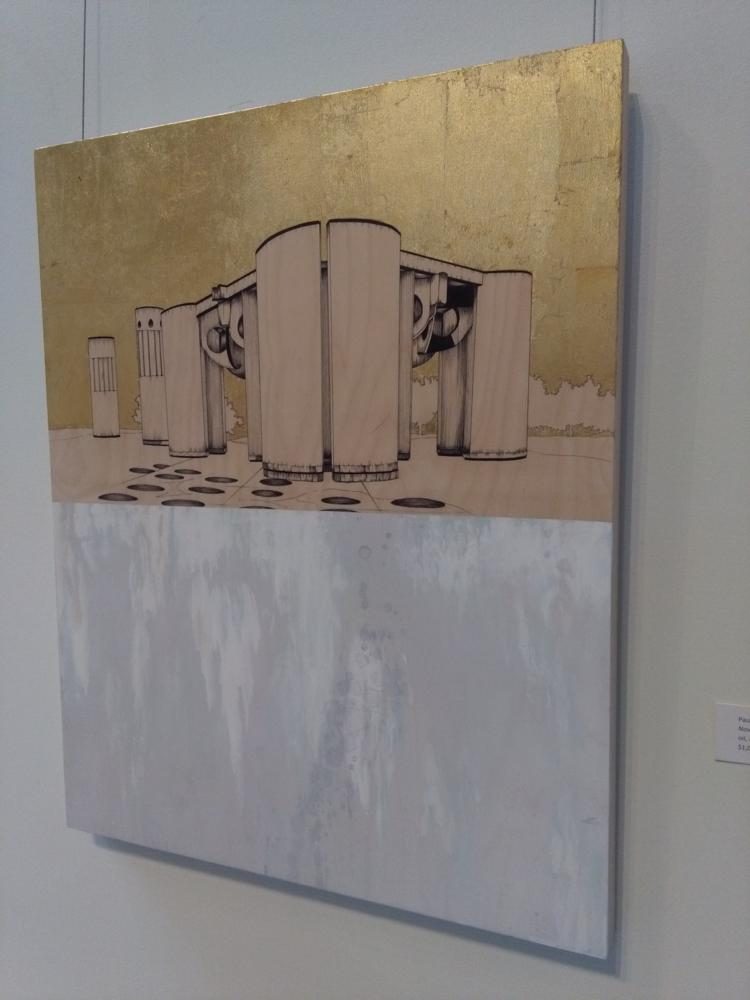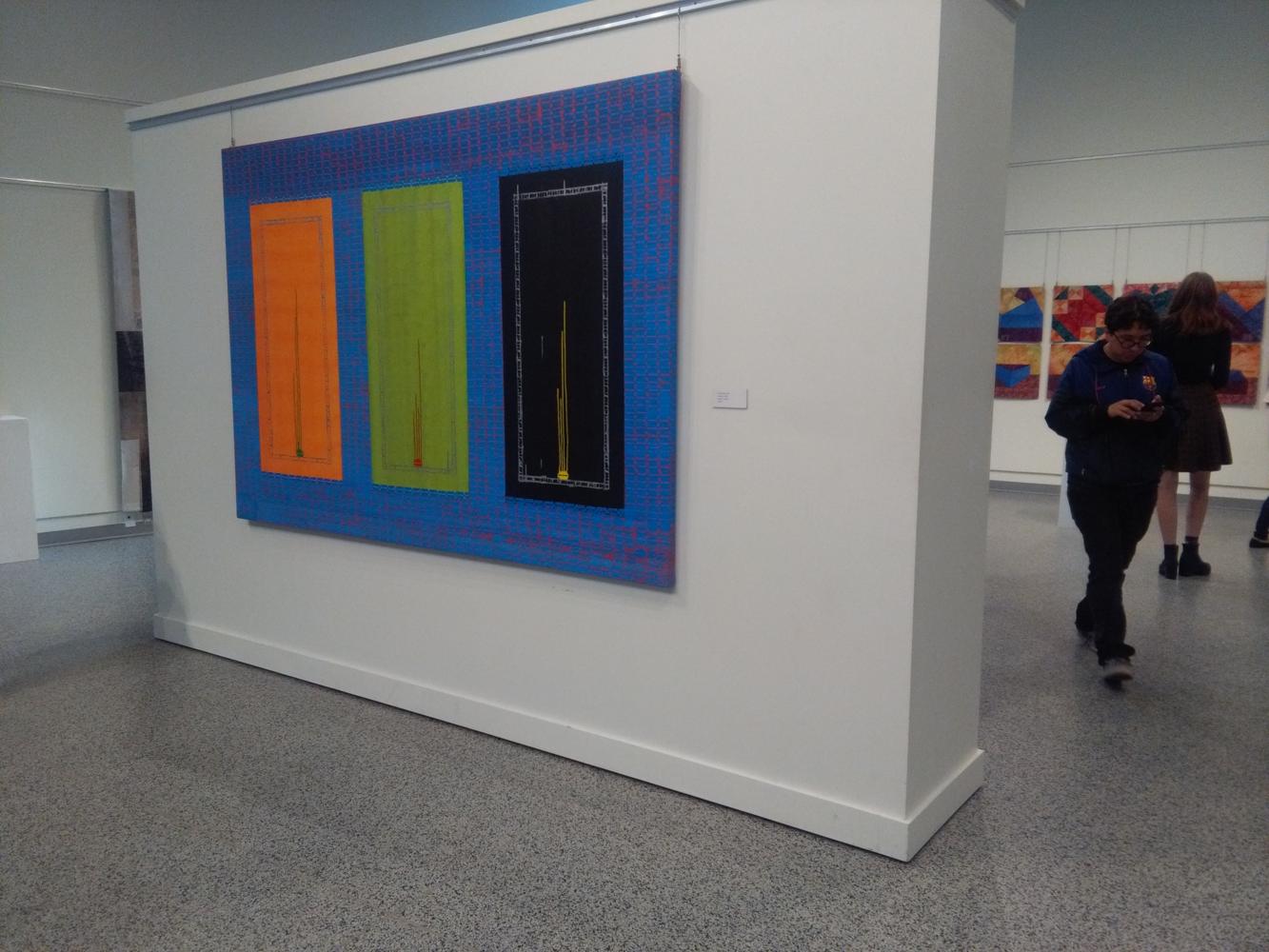 Chilliwack is currently hosting the fifth Fraser Valley Biennale. Established in 2011, the Biennale is an exhibition which displays the work of artists who live and work in the Fraser Valley.
Chilliwack is currently hosting the fifth Fraser Valley Biennale. Established in 2011, the Biennale is an exhibition which displays the work of artists who live and work in the Fraser Valley.
The exhibition moves to different cities periodically; the Chilliwack Cultural Centre is currently displaying small selection of the total works that have been curated by Adrienne Fast, curator of art and visual culture at The Reach Gallery Museum in Abbotsford. The exhibition tour will culminate in a showing of the collection in its totality at The Reach from October 2019 to January 2020.
An opening reception was held on Saturday, June 8 at the Chilliwack Cultural Centre, during which some of the featured artists shared insights into their work.
One of the artists was UFV’s own Chris Friesen. Friesen is a visual arts professor at UFV, as well as former president of the Abbotsford Arts Council. His work has been shown throughout western Canada, and he has helped establish the Fraser Valley arts scene. Friesen’s pair of acrylic landscape paintings on display are entitled Shepherd Resting and Paysanne Gardant une Vache au Bord de L’eau. The paintings are a technical exercise that emulate nineteenth century French landscape painter Jean-Baptiste-Camille Corot, whose works often had fakes made of them, according to Friesen. However, Friesen incorporates his own style with distinct brushstrokes that show his technique, as well as adding specks of bright colour that make the image pop and sparkle, and a harmonious mixture of hard and blended lines.
Paula Funk is a UFV alumni and academic advisor at the university, whose oil, acrylic, and gold leaf painting Novgorod is on display. The painting’s upper half shows semi-abstract architectural forms (mostly columns and other rounded shapes) against a gold background, while the lower half resembles a sheet of marble. Funk was not in attendance at the reception, but her pre-written comments shed light on this work.
“A prolonged housing search recently motivated my artistic consideration of architecture, access, and visual form,” Funk wrote. “In this invented place, functionality doesn’t have to be a primary concern, and curvilinear, organic forms replace the monotonous boxes and angles in which we typically live and work.”
Another notable, local painter whose work is shown is Sharon Huget. Her painting Pillars of Sand was inspired by human structures, especially ancient ones that have stood the test of time. Pillars of Sand shows structures, all in sepia tones, against a murky background. The buildings both appear to be rising up and out from the surrounding gloom and dissolving into it, reflecting the themes of change and transformation which inspired the piece.
Perhaps the most poignant work in the exhibit is Voyage 2, a painting by Qahraman Yousif. Yousif is a Kurdish Syrian who was imprisoned for six months in 1992 for speaking out in favour of democratic reform in Syria. What at first glance appears to be a simple display of colour and shape tells “a visual language” which, in Yousif’s words, reveal details that are “sharp and painful” upon closer inspection. Looking closer, one notices the razor blades with trickles of paint flowing upward, each of which is in the colours red, green, and yellow, colours Yousif was forbidden to use next to each other during his imprisonment due to their use in the Kurdish flag. Another subtle symbol is the painting’s dimensions, 160 cm x 160 cm, which represent the confined space he was forced to live in during his incarceration.
Non-painting works exhibited include Believing is Believing by David Evans, a three paneled photograph display and accompanying text examining the nature of belief. Box Patterns by Karlie Norrish McChesney includes both origami box models and their templates presented on textile squares. A pair of digital tapestries by Krista Kilvert are a marriage between digital photography and textile arts. The exhibit also includes other examples of painting, photography, and sculpture.
The Biennale artworks will be on display in the O’Connor Group Gallery within the Chilliwack Cultural Centre until Saturday, June 29.
Images: Aleister Gwynne/The Cascade


